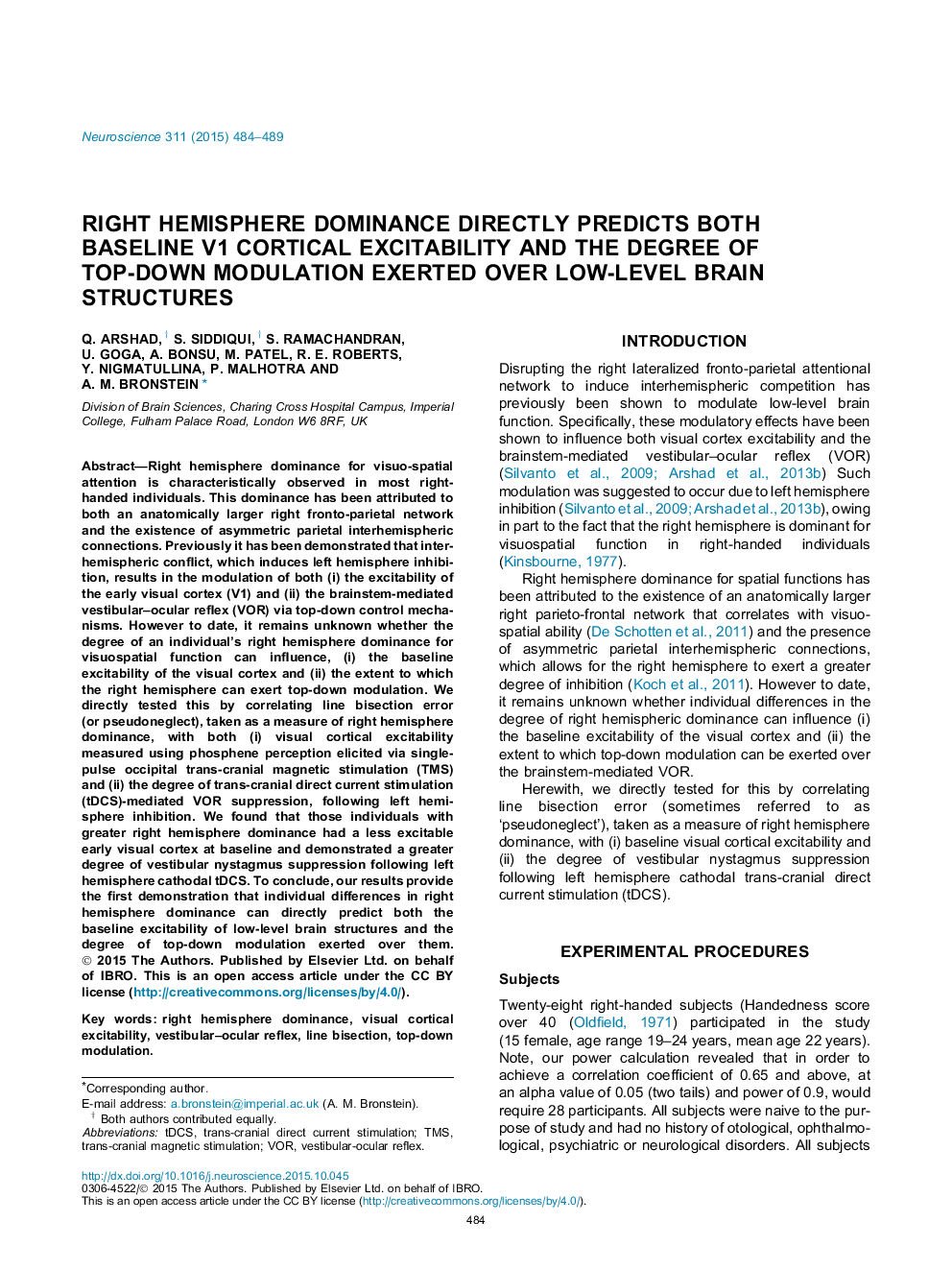| Article ID | Journal | Published Year | Pages | File Type |
|---|---|---|---|---|
| 6271662 | Neuroscience | 2015 | 6 Pages |
Abstract
Right hemisphere dominance for visuo-spatial attention is characteristically observed in most right-handed individuals. This dominance has been attributed to both an anatomically larger right fronto-parietal network and the existence of asymmetric parietal interhemispheric connections. Previously it has been demonstrated that interhemispheric conflict, which induces left hemisphere inhibition, results in the modulation of both (i) the excitability of the early visual cortex (V1) and (ii) the brainstem-mediated vestibular-ocular reflex (VOR) via top-down control mechanisms. However to date, it remains unknown whether the degree of an individual's right hemisphere dominance for visuospatial function can influence, (i) the baseline excitability of the visual cortex and (ii) the extent to which the right hemisphere can exert top-down modulation. We directly tested this by correlating line bisection error (or pseudoneglect), taken as a measure of right hemisphere dominance, with both (i) visual cortical excitability measured using phosphene perception elicited via single-pulse occipital trans-cranial magnetic stimulation (TMS) and (ii) the degree of trans-cranial direct current stimulation (tDCS)-mediated VOR suppression, following left hemisphere inhibition. We found that those individuals with greater right hemisphere dominance had a less excitable early visual cortex at baseline and demonstrated a greater degree of vestibular nystagmus suppression following left hemisphere cathodal tDCS. To conclude, our results provide the first demonstration that individual differences in right hemisphere dominance can directly predict both the baseline excitability of low-level brain structures and the degree of top-down modulation exerted over them.
Related Topics
Life Sciences
Neuroscience
Neuroscience (General)
Authors
Q. Arshad, S. Siddiqui, S. Ramachandran, U. Goga, A. Bonsu, M. Patel, R.E. Roberts, Y. Nigmatullina, P. Malhotra, A.M. Bronstein,
